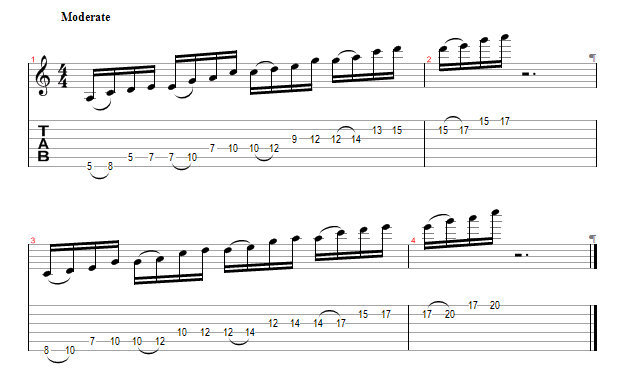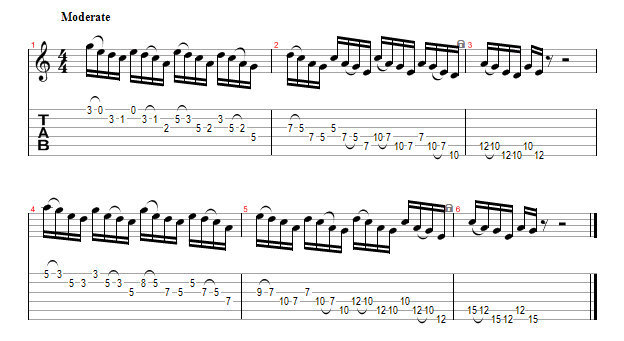Well guitar slingers! Now we’re starting to go places!
In these exercises we will start connecting the boxes diagonally, which is a great way to open up the fretboard by moving more naturally across the neck. Once you got these down, you will have the starting point to go in any direction. To have this kind of holistic approach is also essential when you move into stuff like two-handed improvisation all over the neck, here it is even harder to break out of boxes and patterns. The only solution is to be able to think conceptually about your ideas and how these could be applied all over the neck. Another head twister is that you need to be able to visualize not only one, but between 2-4 positions at the same time, maybe 2 in the left hand and 2 in the right hand while all the time letting these flow across the neck. You see how there is no way of doing that if you are locked into a ”boxed” frame of mind?
First get yourself through this tutorial and the Timing tutorial, and then you will be ready for the advanced technical concepts. Look forward to seeing you there as well =)
So, let’s get moving shall we? The first exercise entails moving diagonally upwards through the octaves and positions. You do the same 4-note pattern (for simplicities sake), and connect that by starting over at the same note you ended up on, just in the next position up, and the next set of string up.
We will be using these two parts of the scale.


You will move through all five boxes/positions of the A minor pentatonic in this way. You also see that in the 3rd bar I begin the exercise in the second box, thus going from the second to the first box. You should practice this starting from ANY box, in ANY key. This is a superb way of moving from a lower position to a higher. As mentioned before, do not get locked into practicing these exercises as licks only, but try to keep focus on connecting the dots so to say.

The second exercise is somewhat more advanced. Here we are using a sequential approach. The idea is to fall four notes down in the scale, then going up three notes and falling four again and so on. A VERY well used sequence in almost any type of music. This is also the reason why I have chosen it, because it gives you a somewhat more practical application of the concept. First, let’s look at the sequence locked into one box if you wish to reacquaint yourself with the idea (first position A minor pentatonic).

Then, let’s see this pattern taken diagonally downwards across the neck. The way to practice this is exactly the same as mentioned above, starting in any box, and in any key. I cannot enough stress the importance that you DO NOT only practice these exercises in one key!
These are the two scale parts we will use:


And here are the examples:

Got that down? Cool! Then let's take it up a notch shall we? Turn the page!





















